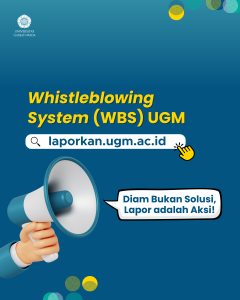Bruxism, or the habit of grinding teeth, is a common condition in children, especially during sleep. While in most cases, bruxism is mild and does not require intervention, prolonged grinding can affect a child's dental health. Therefore, parents need to understand the causes and find appropriate solutions.
Dr. drg. Indra Bramanti, Sp.KGA (K)., M.Sc., and drg. Ignatius Sulistyo Jatmiko, M.Kes., Sp.KGA., in their research on the prevalence of bruxism in children during the COVID-19 pandemic, found that this condition became more common during stressful periods such as the pandemic. One of the primary causes of bruxism in children is stress or anxiety. Children experiencing emotional pressure, whether from school or environmental changes, often grind their teeth as a physical response to stress. Additionally, sleep disorders, such as sleep apnea or general discomfort during sleep, can trigger bruxism. Another study by Dr. drg. Indra Bramanti, Sp.KGA (K)., M.Sc., and Prof. Dr. drg. Iwa Sutardjo Rus S., S.U., Sp.KGA.(K), linked bruxism to excessive mastication muscle contractions, particularly in children aged 12-15 years. Other contributing factors include early tooth development and malocclusion (misaligned bite).
Addressing bruxism requires a comprehensive approach. If stress is the trigger, emotional support and creating a calm home environment can help alleviate the issue. Relaxation activities, such as reading before bed or practicing simple breathing exercises, can reduce anxiety levels. If bruxism is caused by sleep disturbances, consulting a pediatrician or dentist is essential for an accurate diagnosis.
A custom mouthguard designed for children can also be an effective solution to protect teeth from further damage. These guards prevent direct friction between the upper and lower teeth, reducing wear. However, this intervention should only be implemented after consulting a pediatric dentist to ensure proper fit, safety, and comfort.
Bruxism in children can be effectively managed with proper understanding and support. Parents should watch for early signs, such as teeth grinding noises during sleep or jaw pain in the morning, and take prompt action to safeguard their child’s dental health and overall well-being.
Efforts to address bruxism in children contribute to several Sustainable Development Goals (SDGs), including: SDG 3: Good Health and Well-being – Ensuring optimal dental health and reducing children's stress levels; SDG 9: Industry, Innovation, and Infrastructure – Advancing medical technology, such as the development of safer and more efficient mouthguards; and SDG 12: Responsible Consumption and Production – Promoting education on healthy eating habits and responsible oral care, fostering sustainable well-being.
References
Dr. drg. Indra Bramanti, Sp.KGA (K).,M.Sc., drg. Ignatius Sulistyo Jatmiko, M.Kes., Sp.KGA., Prevalence of Bruxism in Children Aged 12-15 During the COVID-19 Pandemic (A Study on Junior High School Students in Yogyakarta Using a Questionnaire Approach), https://etd.repository.ugm.ac.id/penelitian/detail/219784
Dr. drg. Indra Bramanti, Sp.KGA (K).,M.Sc., Prof. Dr. drg. Iwa Sutardjo Rus S., S.U, Sp.KGA.(K), Overview of Maximum Voluntary Contraction of Mastication Muscles in Children Aged 12-15 with Bruxism (Study on Junior High School Students in Jetis District, Yogyakarta), https://etd.repository.ugm.ac.id/penelitian/detail/232790
Author: Rizky B. Hendrawan | Photo: Freepik



